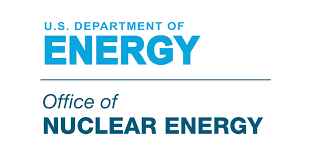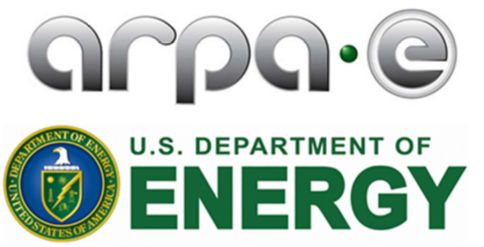Part 3 of 3 Parts (Please read Part 2)
Project 7
The Ultra Safe Nuclear Corporation in Seattle, WA will receive $2,350,000 for their work on Technology Enabling Zero-EPZ Micro Modular Reactors.
The purpose of this project is to develop advanced technologies to increase the power density of gas-cooled reactors which will allow them to be smaller than the current designs allow. The researchers are looking for a new high-performance moderator which will allow the creation of a compact reactors with enhanced safety features. Moderators slow down neutrons so that they can create the fission reaction in the reactor. If the size of reactors can be reduced, it will allow greater versatility in deployment as well as reducing construction costs and time. These are important features for smaller modular reactors that need to be constructed where heat and power are required.
Project 8
The University of Illinois at Urbana-Champaign in Champaign, IL will receive $774,879 for their work on Enabling Load Following Capability in the Transatomic Power MSR.
The purpose of this project is the development of a fuel processing system for molten salt reactors that will allow these reactors to reduce their power output when there is reduced power demand. In order to allow this load following, the researchers will carry out simulations to understand how to remove the unwanted fission by-products that slow the fission reaction rate and reduce the power generation of the reactor. They hope to design a process for reprocessing molten-salt fuel which would remove a major barrier in the commercialization of molten-salt reactors.
Project 9
Westinghouse Electric Company, LLC in Cranberry Township, PA will receive $5,000,000 for their work on Self-regulating, Solid Core Block “SCB” for an Inherently Safe Heat Pipe Reactor.
The purpose of this project is the development of a self-regulating “solid core block” that utilizes solid materials to regulate the fission reaction rate in the reactor. Currently, such moderation is achieved by bulk flow of liquids or complex components with moving parts. This innovation will allow a reactor to be safely shut down without requiring external controls, external power sources, or operator intervention. This will allow highly autonomous safe operation. The researchers will carry out modeling and simulation to demonstrate the self-regulating ability of SCBs. They will also conduct additional tests to validate their modeling and simulation and to confirm that such components can be manufactured.
Project 10
Yellowstone Energy in Knoxville, TN will receive $2,599,185 for their work on a Reactivity Control Device for Advanced Reactors.
The purpose of this project is the development of a new reactor control technology that will enhance passive safety and reduce costs for molten-salt reactors. Materials will be embedded in control rods which will vaporize at high temperatures. The vapor that they produce will capture neutrons and slow the fission reaction rate without the need for external controls. The researchers will utilize simulation tools to determine the effectiveness of the proposed control device. They will also carry out a techno-economic analysis at the level of a nuclear power plant to determine whether or not their proposed technology will be cost effective.
Author: Burt Webb
-

Nuclear Reactors 571 – The U.S. Department Of Energy Is Funding New Projects Under The ARPA – E – Part 3 of 3 Parts
-

Geiger Readings for Jun 05, 2018
Ambient office = 97 nanosieverts per hour
Ambient outside = 87 nanosieverts per hour
Soil exposed to rain water = 71 nanosieverts per hour
Orange bell pepper from Central Market = 95 nanosieverts per hour
Tap water = 76 nanosieverts per hour
Filter water = 67 nanosieverts per hour
-

Nuclear Reactors 570 – The U.S. Department Of Energy Is Funding New Projects Under The ARPA – E – Part 2 of 3 Parts
Part 2 of 3 Parts (Please read Part 1 first)
Project 1
HolosGen, LLC received $2,278,200 for their work on a Transportable Modular Reactor by Balance of Plant Elimination.
The purpose of this project is the development of a gas cooled nuclear reactor which is transportable. The reactor would be what is called “load following” meaning that the output of the reactor can be changed to match the demands of the grid. This addressed one of the chief complaints about the current generation of nuclear reactors. They were designed and built to produce a certain amount of power constantly. They can be modified to allow load following but it is expensive to do.
These new reactors will be simpler to construct and can be packaged in standard shipping containers which will make them highly transportable and cheaper that current power reactors. The researchers are going to demonstrate the feasibility of this approach by using multi-physics modeling and simulation tools. They will validate the computer models by constructing and testing a non-nuclear prototype.
Project 2
North Carolina State University in Raleigh, NC will receive $3,386,834 for the Development of a Nearly Autonomous Management and Control System for Advanced Reactors
The purpose of this project is the development of a highly autonomous and automated management and control system for advanced nuclear reactors. The new system they are developing will use artificial intelligence and machine learning to continuously monitor data which can be used to predict future plant status. The system will be able to provide suggestions to plant operators with respect to control of the reactor. The hope is that this system will be able to reduce the size of operational staff needed to manage the plant through new instrumentation, better operator training and “smart” procedures. This will also reduce the cost of managing and maintaining nuclear power plants.
Project 3
State University of New York at Buffalo in Amherst, NY will receive $1,443,635 for Reducing Overnight Capital Cost of Advanced Reactors Using Equipment-based Seismic Protective Technologies.
The purpose of this project is to lower the complexity and cost of nuclear power plants by integrating seismic protection systems into the development of advanced reactor buildings and their supporting structures. Every nuclear power plant has to incorporate protections against earthquakes. In the current generation of nuclear power plants, these seismic protections are made of large components which are usually custom made for each new plant. The researchers are working to develop standardized equipment which can be optimized for individual plants and make their construction simpler and cheaper.
Project 4
Terrestrial Energy USA, Inc. in New York, NY will receive $3,150,000 for their work on Magnetically Suspended Canned Rotor Pumps for the Integral Molten Salt Reactor.
The purpose of this project is to develop a novel magnetically suspended circulation pump for molten salt reactors. This will result in the improvement of plant performance, increased pump lifetime, and the reduction of costs. Today, cantilever type pumps are used in the harsh environment of molten salt reactors. The new pumps that are being designed by the researchers will be self-contained. They do not require the vulnerable mechanical seals that are a problem for current pumps. The new pumps will be strong enough to survive the reactor core’s seven-year operating lifetimes. The researchers will construct and test prototypes.
Please read Part 2 -

Geiger Readings for Jun 04, 2018
Ambient office = 93 nanosieverts per hour
Ambient outside = 52 nanosieverts per hour
Soil exposed to rain water = 52 nanosieverts per hour
Asparagus from Central Market = 107 nanosieverts per hour
Tap water = 54 nanosieverts per hour
Filter water = 45 nanosieverts per hour
-

Geiger Readings for Jun 03, 2018
Ambient office = 124 nanosieverts per hour
Ambient outside = 59 nanosieverts per hour
Soil exposed to rain water = 81 nanosieverts per hour
Redleaf lettuce from Central Market = 131 nanosieverts per hour
Tap water = 82 nanosieverts per hour
Filter water = 52 nanosieverts per hour
-

Geiger Readings for Jun 02, 2018
Ambient office = 94 nanosieverts per hour
Ambient outside = 104 nanosieverts per hour
Soil exposed to rain water = 121 nanosieverts per hour
Romaine lettuce from Central Market = 60 nanosieverts per hour
Tap water = 89 nanosieverts per hour
Filter water = 84 nanosieverts per hour
Dover sole – Caught in USA = 100 nanosieverts per hour
